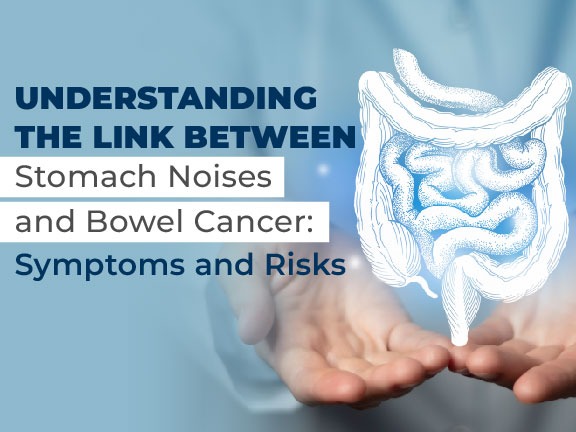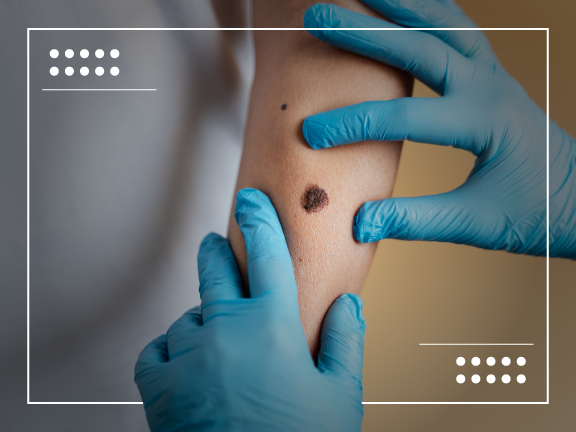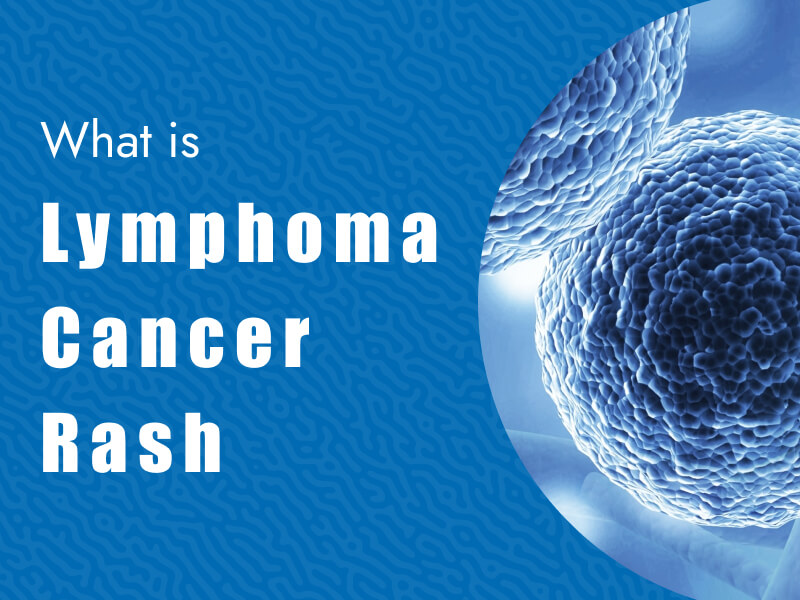Melanoma is 98% treatable when caught early, so having regular check-ups is vital. And once diagnosed with melanoma, being proactive and determining the stage is crucial. Diagnosis is simple, the dermatologist biopsies the suspicious tissue and sends it to a lab to be investigated by a dermapathologist. After the diagnosis comes the staging. In staging, the doctors determine the location of the tumor and to what extent the cancer spread in the body. Determining the stage of disease helps doctors to develop a prognosis and compose a treatment plan for the individual.
What methods are used to collect data for staging?
The medical teams may require one or more tests to get sufficient data for the staging.
Physical examination: Doctor’s physical examination of the patient may help determine the location and size of the tumor and whether the cancer has spread to other parts of the body such as the lymph nodes or organs.
Imaging tests: Different types of imaging tests such as the MRI scans, CT scans, and x-rays help determine the location and the size of the tumor as well as how spread it is.
Laboratory tests: Bodily fluids such as blood, urine and others, and tissues are studied to gather data.
Pathology reports: These reports help confirm the diagnosis and stage of cancer as they provide information about the size of the tumor, its spread into other organs and tissues, the type of cancer cells and the grade of the tumor (the resemblance level of the cancer cell to normal tissues).
Surgical reports: The samples removed by the medical team analyzed to identify the size and the look of the tumor, and yield insights about the lymph node and organ involvement.
Type of Staging
American Joint Committee on Cancer lists four different methods of staging:
1) Clinical Staging. Based on the physical examination, imaging tests and the biopsies of the affected areas, the doctors try to figure out the extent of the cancer.
2) Pathologic Staging. This method brings together the outcomes of clinical staging and surgeries. It can be performed on patients who have had surgery to remove a tumor or extent of the cancer.
3) Post-Therapy or Post-Neoadjuvant Therapy Staging. This method helps to determine the amount of cancer residue after the patient receives a treatment such as hormone therapy or chemotherapy and/or pre-surgery radiation therapy, or where no surgery is performed. It can be assessed by clinical staging guidelines and/or pathologic staging guidelines.
4) Restaging. The staging method is used to identify the extent of the cancer that develops again after treatment. It helps identify the nature of the returning tumor and design the best treatment plan accordingly.
The most widely used system to determine the stage of melanoma is the TNM system developed by the American Joint Committee on Cancer (AJCC) and the Union for International Cancer Control (UICC). This tool evaluates three key pieces of information:
- Extent of the main (primary) tumor (T): The T category describes the original (primary) tumor. The data gathered gives information about the depth (tumor thickness) of the cancer in the skin and if it is ulcerated or not (ulceration). The Breslow measurement is the value indicator to determine the thickness of the melanoma. As the melanoma becomes thicker, it has a greater chance of spreading. Ulceration is the deterioration of skin over the melanoma. Ulcerated melanoma turns the outlook of the skin into a worse situation. Down below, you can see the content of the indicators:
- TX: Original tumor cannot be evaluated
- T0: No evidence of the original tumor
- Tis: Carcinoma in situ (early cancer that has not spread to neighboring tissues)
- T1-T4: Size and/or extent of the original tumor
- Spread to nearby lymph nodes (N): This information helps doctors understand if the cancer has spread to the nearby lymph nodes. The doctors use certain symbols to indicate their findings:
- NX: Regional lymph nodes cannot be evaluated
- N0: No cancer found in the lymph nodes
- N1-N3: Involvement of regional lymph nodes (number and/or extent of spread)
- Presence of metastasis (M): Melanoma can spread almost the whole body, but it generally spreads to the bones, liver, lungs, brain, and the skin or lymph nodes in other parts of the body. So, the doctors try to determine whether the cancer spread to distant organs or distant lymph nodes.
- M0: Cancer has not spread to other body parts
- M1: Cancer has spread to distant body parts
The letters T, N, M provide details about each of the given factors. The higher the values measured in the search, the more advanced the cancer is. Melanoma staging is a complex process so, once the T, N and M categories are set, the gathered information is used as a part of the overall staging.
Stages of Melanoma
There are five stages of melanoma.
Stage 0: Refers to melanoma in situ, meaning the cancer cells are present only on the epidermis (the outer layer of skin). Some doctors consider this stage pre-cancer. At this stage, the cancer has not spread to near tissues or parts, so just like stage I and stage II, melanoma skin cancer is also local. Although this situation does not cause concern at first glance, melanoma in situ can develop an invasive nature, so it should not be ignored. Melanoma in situ is generally removed by minor surgery, sometimes called excision.
Stage I: In this early stage, the thickness (size) of the cancer is usually smaller than 1 mm (0.04”), and it may and may not be ulcerated. The tumor is seen both in epidermis (the out layer of the skin) and dermis (second layer). Like stage 0, stage I melanoma is also local in nature, meaning it has not spread to neighbor tissues or lymph nodes beyond the primary tumor.
This stage can be divided into two subcategories: Stage IA and IB.
Stage IA melanoma is less than 1 mm thick and may or may not be ulcerated.
In stage IB melanoma, the size of the tumor is between 1-2 mm (0.04”-0.08”), and not ulcerated.
Stage II: Another local type of melanoma, meaning that the tumor has not spread to nearby tissues or organs. It has an invasive nature. The tumor is located on both layers of the skin (the epidermis and dermis). In Breslow Depth, stage II tumor thickness changes between 1mm-4mm (0.04”-0.16”). Although it may or may not contain ulceration, if there is, it can only be seen under the microscope.
Stage II is divided into three subcategories:
Stage IIA: The melanoma thickness is between 1-2mm (0.04”-0.08”), and it Is ulcerated, or its thickness is between 2-4mm (0.08”- 0.16”) and not ulcerated.
Stage IIB: The melanoma thickness is between 2-4mm (0.08”- 0.16”) and it is ulcerated, or the thickness is over 4mm (0.16”) and is not ulcerated.
Stage IIC: The melanoma thickness is over 4mm (0.16”) and is ulcerated.
Stage III: An invasive stage, stage III indicates either a local spread, meaning it has developed beyond the primary tumor to the closest lymph nodes, or a further, between the primary tumor and the nearby lymph nodes. The lymphatic system is an organ system in vertebrates that is part of the immune system, and complementary to the circulatory system. Sometimes, the tumor can spread to skin on the way to a lymph node called in-transit metastasis, satellite metastasis, or microsatellite disease. Satellite metastasis are cancer cells that had expand very close to the primary tumor [within 2 cm (0.79”). In-transit metastasis are cancer cells that had expand further than 2cm (0.79”) but before the nearest lymph node.
There are four subgroups of Stage III melanoma: IIIA, IIIB, IIIC, IIID.
Stage IIIA: The thickness of the tumor is over 2mm (0.08”) and might or might not be ulcerated (T1 or T2a). The cancer has spread to one or three nearby lymph nodes, but it is only seen under the microscope (N1a or N2a). It has not spread to the distant part of the body (M0).
Stage IIIB: This stage is used to define more than one scenario. In the first scenario, the cancer has not spread to distant parts of the body (M0), there is no sign of the primary (original) tumor, and the cancer has spread to only one nearby lymph node (N1b). Or, it has spread to a small part of the nearby skin (satellite tumors) or to skin lymphatic channels around the tumor (N1c) without affecting the nearby lymph nodes.
In the second situation where this staging is used, again, the cancer has not spread to the distant parts of the body. The tumor thickness is under 4mm (0.16”) and might or might not be ulcerated (T1, T2 or T3a), and the cancer spread to only one nearby lymph node (N1a or N1b) or is has a minor spread to the nearby skin (satellite tumors) or to skin lymphatic channels around the tumor (N1c) (without affecting the nearby lymph nodes). Or it has spread to two or three nearby lymph nodes (N2a or N2b).
Stage IIIC: This staging applies in four different situations. The first situation is where there is no sign of the primary tumor (T0), and it has not spread to the distant parts of the body (M0). It has either spread to two or more nearby lymph nodes, at least one of which can be seen or felt (N2b or N3b) or it has a minor spread to nearby skin (satellite tumors) or to skin lymphatic channels around the tumor (N2c or N3c). Or it has spread to nearby lymph nodes that are clumped together (N3b or N3c).
The second situation applies when the cancer has not spread to the distant parts of the body (M0), however the tumor thickness is over 4mm (0.16”), and might or might not be ulcerated (T1, T2, or T3a). And the cancer has a minor spread to nearby skin (satellite tumors) or to skin lymphatic channels around the tumor, and it has reached nearby lymph nodes (N2c or N3c). Or it has spread to four or more nearby lymph nodes (N3a or N3b), or it has spread to nearby lymph nodes that are clumped together (N3b or N3c).
The third situation is where the cancer is not spread to the distant parts of the body (M0), but the thickness of the tumor is between 2-4mm (0.08”- 0.16”) and is ulcerated (T3b), or its thickness is over 4mm (0.16”) but not ulcerated (T4a). The cancer has spread to one or more lymph nodes and/or has a minor spread to nearby skin (satellite tumors) or to skin lymphatic channels around the tumor (N1 or higher).
The fourth situation is where the cancer has not spread to the distant part of the body (M0), but its thickness is over 4mm (0.16”) and is ulcerated (T4b). It has spread to one to three nearby lymph nodes, which are not clumped together (N1a/b or N2a/b); or it has a minor spread to the nearby skin (satellite tumors) or to skin lymphatic channels around the tumor, and it might (N2c) or might not (N1c) have reached one nearby lymph node.
Stage IIID: The thickness of the tumor is over 4mm (0.16”) and is ulcerated (T4b). In addition to this it has either spread to four or more nearby lymph nodes (N3a or N3b) or to nearby lymph nodes that are clumped together (N3b). It might have been spread to small areas of nearby skin (satellite tumors) or to skin lymphatic channels around the tumor, and it has spread to at least to nearby lymph nodes, or to lymph nodes that are clumped together (N3c). It has not spread to the distant parts of the body (M0).
Stage IV: The most distinctive characteristic of this stage is that cancer has spread to distant parts of the body such as the brain, liver and lungs (M1). The tumor can be of any size, and it might or might not be ulcerated (any T). It might or might not have spread to nearby lymph nodes (any N).
Sources:












